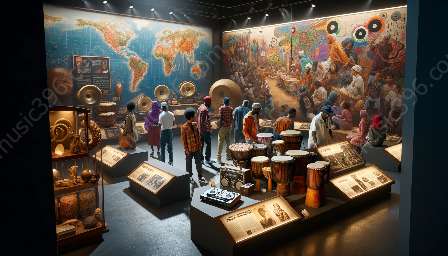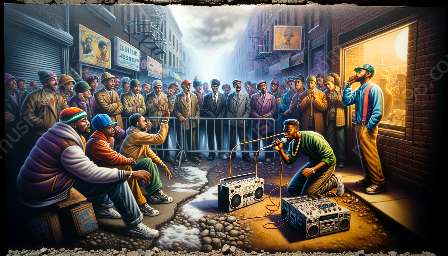Urban music encompasses a diverse range of genres, including soul, R&B, and hip-hop, each with its unique characteristics that define its identity and appeal. In this exploration, we'll delve into the key features that make urban music so distinct and influential.
Understanding Urban Music
Urban music, also known as urban contemporary music, is a genre that originated in the urban areas of the United States. It is deeply rooted in the rich cultural heritage and experiences of urban communities, reflecting their struggles, aspirations, and celebrations. The genre has evolved over the years, incorporating elements of soul, R&B, and hip-hop to create a dynamic and influential musical landscape.
Soul and R&B: The Heart of Urban Music
Soul and R&B are integral components of urban music, known for their emotive lyrics, smooth melodies, and powerful vocal performances. These genres emerged in the mid-20th century, with soul music drawing inspiration from gospel, rhythm and blues, and jazz, while R&B combines elements of soul, funk, and pop.
Key characteristics of soul and R&B in urban music include:
- Emotional Depth: Soul and R&B songs often explore themes of love, heartache, and resilience, delving into the raw emotions of the human experience.
- Lyrical Storytelling: Soul and R&B artists are celebrated for their storytelling prowess, weaving evocative narratives into their songs that resonate with audiences on a personal level.
- Smooth, Melodic Vocals: The hallmark of soul and R&B vocal performances is their rich, velvety texture, with artists delivering poignant performances that captivate listeners.
- Rhythmic Grooves: Both genres feature infectious grooves and rhythmic patterns that invite listeners to move and sway to the music, creating an immersive sonic experience.
Urban and Hip-Hop: The Pulse of City Life
Urban and hip-hop music capture the vibrant energy and culture of city life, expressing the diverse voices and perspectives within urban communities. These genres are characterized by their bold beats, poetic lyrics, and innovative production techniques, reflecting the ever-changing landscape of urban environments.
Key characteristics of urban and hip-hop in urban music include:
- Urban Realism: Urban and hip-hop artists often depict the realities of urban life, addressing social issues, street culture, and personal experiences with an unapologetic authenticity.
- Rhythmic Innovation: These genres are marked by their inventive use of rhythms, samples, and electronic elements, pushing the boundaries of musical expression and creating new sonic landscapes.
- Lyrical Dexterity: Urban and hip-hop artists are celebrated for their lyrical agility, delivering rapid-fire verses, intricate wordplay, and thought-provoking messages that challenge societal norms.
- Cultural Influence: Urban and hip-hop music serve as powerful platforms for cultural expression, shaping fashion, language, and visual arts while amplifying the voices of marginalized communities.
Blurring Boundaries: The Fusion of Urban Genres
In contemporary urban music, artists often incorporate elements from soul, R&B, hip-hop, and urban genres, blurring the boundaries to create innovative, genre-defying sounds that resonate across diverse audiences. This fusion of influences and styles reflects the ever-evolving nature of urban music, showcasing its ability to adapt and redefine itself while retaining its core essence.
Conclusion
Urban music, with its emphasis on soul, R&B, hip-hop, and urban influences, stands as a vibrant tapestry of musical expression that celebrates the rich cultural heritage and experiences of urban communities. From the emotive storytelling of soul and R&B to the raw authenticity of urban and hip-hop, each genre contributes to the dynamic and influential landscape of urban music, continually inspiring and resonating with audiences worldwide.




























